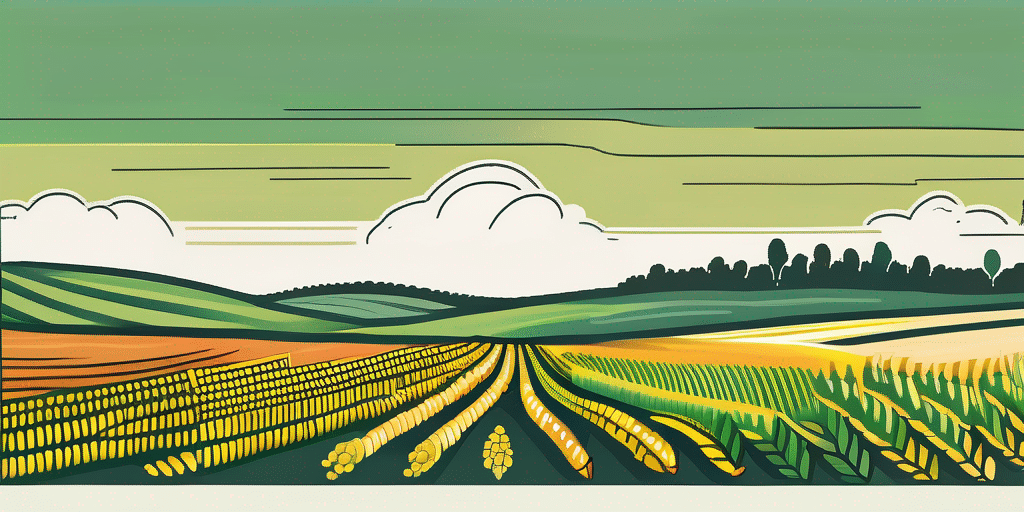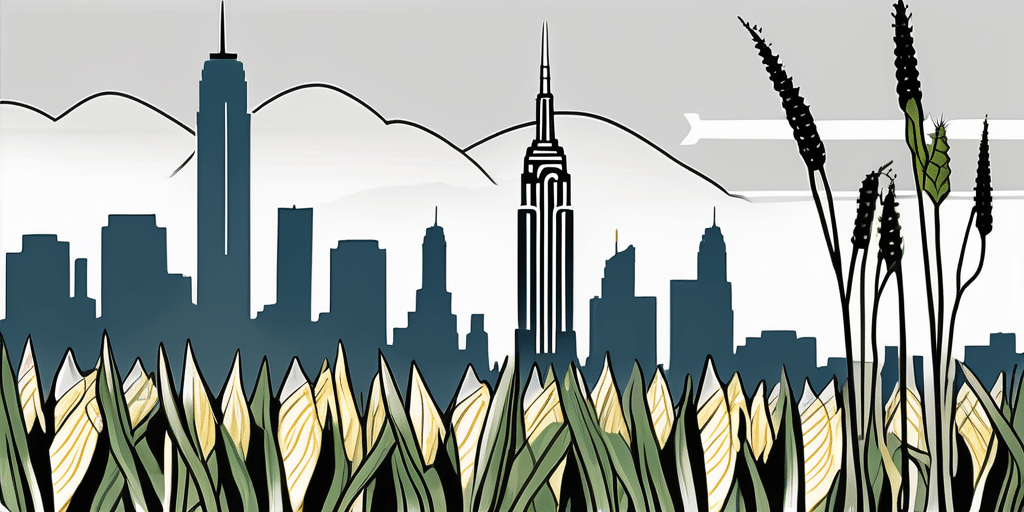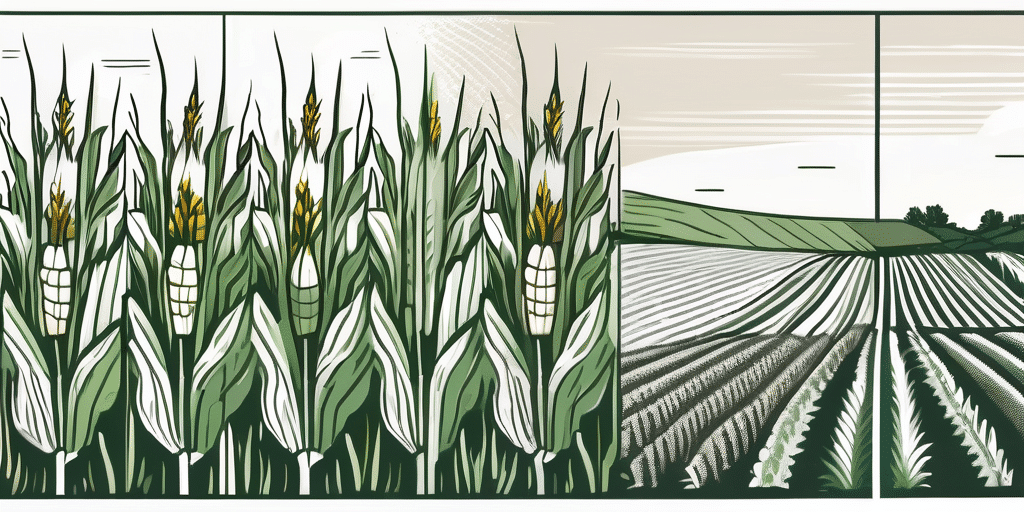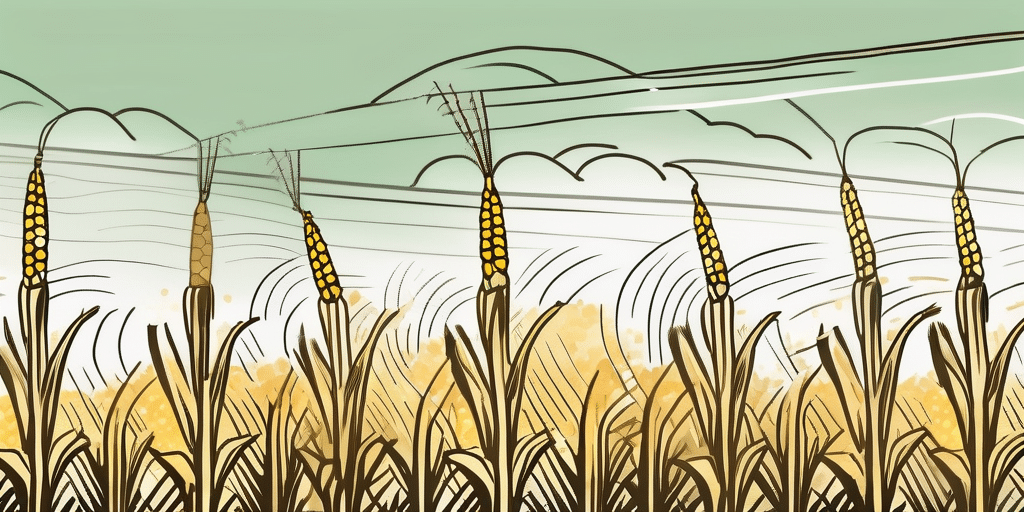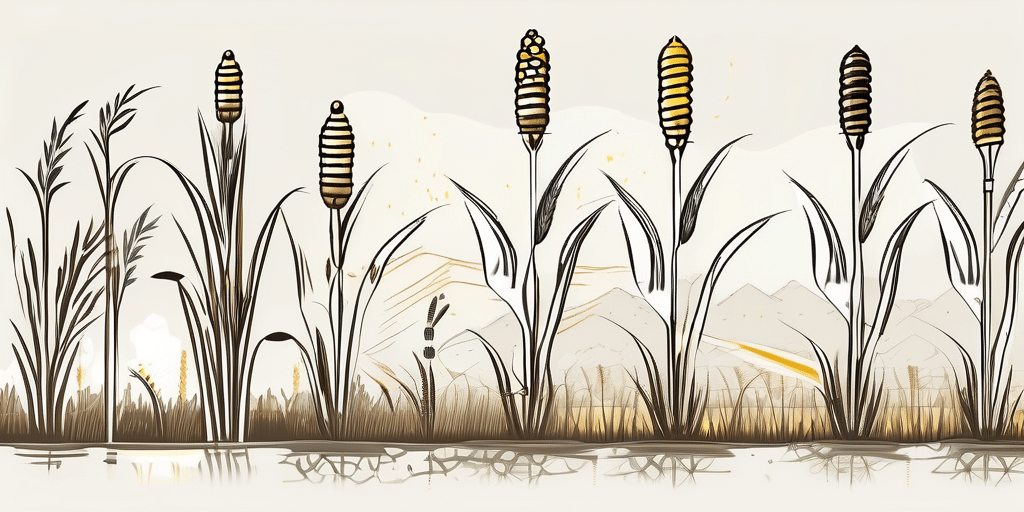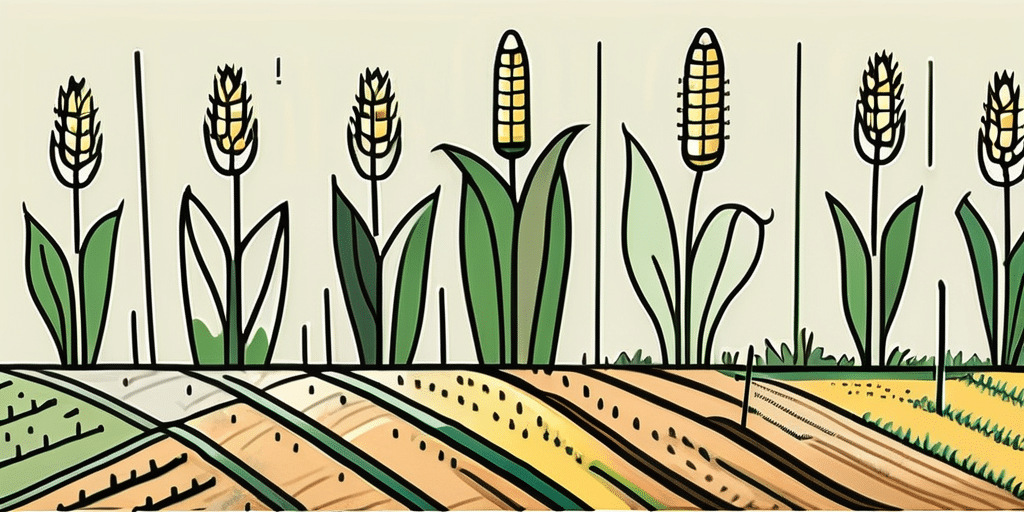Corn is a staple in many diets around the world, providing essential nutrients and versatility in the kitchen. However, did you know that planting the right companion plants alongside corn can enhance its growth and productivity? In this article, we will explore the world of corn companion plants, understanding the benefits they bring and the ones we should avoid.
Understanding Companion Planting
Companion planting is a gardening technique that involves planting different crops together to maximize their potential. These companion plants work together to provide benefits such as pest control, improved soil fertility, and increased yields. It’s like a harmonious ecosystem where each plant has a role to play.
Companion planting is a practice deeply rooted in traditional agricultural wisdom. The concept is not only about maximizing the space in your garden but also about creating a balanced and sustainable environment for your plants to thrive. By harnessing the natural synergies between different plant species, you can create a self-sustaining system that mimics the diversity and resilience of natural ecosystems.
The Basics of Companion Planting
Companion planting is based on the natural relationships between plants. Some plants can improve soil fertility by fixing nitrogen, while others repel pests or provide shade. Understanding the basic principles of companion planting is essential for successful gardening.
When practicing companion planting, it’s crucial to consider not only the individual needs of each plant but also how they interact with one another. For example, planting aromatic herbs like rosemary or sage alongside your vegetables can help deter pests and attract beneficial insects. Additionally, certain plants have allelopathic properties, meaning they release chemicals that inhibit the growth of competing plants. By strategically pairing compatible species, you can create a thriving garden ecosystem that fosters plant health and productivity.
Benefits of Companion Planting for Corn
Companion planting has numerous benefits when it comes to growing corn. Some of these benefits include:
- Pest Control: Certain companion plants, like marigolds and basil, emit strong scents that repel insects, reducing the need for chemical pesticides.
- Improved Soil Fertility: Legumes, such as beans and peas, are natural nitrogen fixers. They take nitrogen from the air and convert it into a form that is readily available to plants, like corn.
- Enhanced Growth: Some companion plants, like sunflowers, can provide shade to corn, preventing excessive evaporation and creating a microclimate that promotes growth.
Best Companion Plants for Corn
Now that we understand the benefits of companion planting, let’s explore some of the best companion plants for corn.
Legumes: Natural Nitrogen Fixers
Legumes, such as beans and peas, are excellent companion plants for corn. They have a unique ability to convert nitrogen gas in the air into a form that corn can absorb through its roots. Intercropping legumes with corn can significantly improve nitrogen levels in the soil, enhancing corn growth and reducing the need for additional fertilizers.
Furthermore, legumes have deep root systems that help break up compacted soil, allowing corn roots to penetrate deeper and access more nutrients and water. This dynamic relationship between legumes and corn creates a mutually beneficial environment where each plant supports the other’s growth and health.
Squash and Pumpkins: Ground Cover Companions
Squash and pumpkins serve as great ground cover companions for corn. Their large leaves create shade, preventing weeds from taking over and conserving soil moisture. Additionally, their prickly stems act as a deterrent to pests, protecting corn from unwanted visitors.
In addition to their practical benefits, squash and pumpkins add a visual appeal to the garden with their vibrant colors and unique shapes. This diversity in plant types not only enhances the aesthetic value of the garden but also attracts a wider range of beneficial insects that contribute to overall ecosystem health.
Sunflowers: Tall Companions for Corn
Sunflowers are not just beautiful additions to a garden; they also make great companions for corn. Due to their height, sunflowers provide shade to the corn stalks, reducing weed growth and keeping the soil cooler. The tall sunflowers can also act as windbreaks, protecting the delicate corn plants from strong gusts.
Moreover, sunflowers are known to attract pollinators such as bees and butterflies, which are essential for the successful pollination of corn plants. By incorporating sunflowers into the cornfield, you are not only creating a visually stunning landscape but also fostering a biodiverse habitat that promotes a thriving ecosystem within your garden.
Plants to Avoid Planting with Corn
While some plants thrive alongside corn, others can hinder its growth and overall productivity. Here are a few plants you should avoid planting with corn.
Why Some Plants Don’t Work Well with Corn
Plants have different growth characteristics and nutritional requirements. Some plants may compete with corn for resources like water, sunlight, and nutrients. Additionally, certain plants may attract pests or diseases that can harm corn. It’s important to choose companion plants carefully to ensure the success of your corn crop.
Tomatoes and Corn: A Problematic Pairing
Although tomatoes and corn are both popular garden crops, they do not make good companions when planted together. Tomatoes are susceptible to a disease called fusarium wilt, which can also affect corn. Planting these two crops together can increase the risk of disease transmission, leading to reduced yields.
The Issue with Planting Corn and Potatoes Together
Another combination to avoid is planting corn and potatoes together. Both crops have different needs in terms of soil fertility and spacing. Planting them together can result in competition for resources and increased susceptibility to pests and diseases. It’s best to keep these crops separate for optimal growth and health.
On the other hand, planting beans alongside corn can be beneficial for both crops. Beans are nitrogen-fixing plants, which means they can help improve the soil’s nitrogen levels. Corn, on the other hand, requires a lot of nitrogen to grow. By planting beans nearby, you can naturally enhance the soil’s fertility and support the growth of your corn crop.
Marigolds: The Unsung Heroes of the Cornfield
Marigolds are often overlooked in the garden, but they can play a crucial role in supporting corn plants. Marigolds have natural pest-repelling properties that can help protect corn from harmful insects. Their vibrant flowers also attract beneficial insects that can aid in pollination, leading to better corn yields. Consider planting marigolds around your corn patch to create a more balanced and thriving ecosystem.
Tips for Successful Corn Companion Planting
While companion planting can greatly benefit corn, there are a few key factors to consider for successful results.
Companion planting is an age-old gardening technique that involves planting different crops in close proximity to enhance growth, deter pests, and maximize space utilization. When it comes to corn, companion planting can be particularly advantageous as certain plants can help improve soil quality, provide natural pest control, and even enhance the flavor of the corn.
Timing Your Planting for Optimal Growth
When planning your garden, consider the timing of planting corn and its companion plants. Start by planting the corn first, allowing it to establish strong roots before interplanting with the companions. This staggered approach helps avoid overcrowding and ensures that each plant gets the resources it needs for optimal growth.
Additionally, consider the growth habits and maturity rates of both corn and its companions. Some plants may grow taller or spread wider than others, so planning the layout of your garden beds accordingly can prevent shading and competition for resources among the plants.
Considering Soil Conditions and Sunlight
Understanding the soil requirements and sunlight preferences of both corn and its companion plants is crucial. Corn prefers well-draining soil and full sunlight, while some companions may thrive in slightly different conditions. Be mindful of these differences and choose companion plants that are compatible with the soil and sunlight available in your garden.
Moreover, certain companion plants can act as dynamic accumulators, drawing up nutrients from deep within the soil and making them available to the corn and other plants. By selecting companion plants with complementary nutrient needs, you can create a more balanced and fertile growing environment for your crops.
Common Mistakes in Corn Companion Planting
While companion planting can be beneficial, it’s important to avoid some common mistakes that can hinder your corn crop’s success.
Companion planting is a traditional gardening practice that involves planting different crops in close proximity to enhance each other’s growth and deter pests. When done correctly, it can improve soil health, increase biodiversity, and boost overall crop yields.
Overcrowding Your Corn Plants
It’s tempting to plant as many companion plants as possible to maximize the benefits. However, overcrowding can lead to competition for resources and stunted growth. Give your corn and its companion plants enough space to thrive, ensuring adequate airflow and sunlight penetration.
Consider the growth habits and space requirements of each companion plant before planting them alongside your corn. Some plants, like beans and squash, can complement corn by providing nitrogen fixation and shading the soil, but they also need room to spread out and grow effectively.
Ignoring Pest and Disease Considerations
Companion planting is an effective method for natural pest control, but it’s not foolproof. Ignoring the potential for pests and diseases can result in damage to your corn crop. Monitor your garden regularly for signs of trouble and take appropriate action, such as removing affected plants or using organic pest control methods.
Some companion plants, such as marigolds and nasturtiums, can help repel pests with their strong scents or by attracting beneficial insects. However, it’s essential to research the specific pests and diseases that affect corn in your region and choose companion plants that can effectively deter or combat them.
The Impact of Companion Planting on Corn Yield
Companion planting can have a profound effect on the yield and overall health of your corn crop. Let’s explore how it can increase corn production.
When considering companion planting for your corn crop, it’s essential to understand the intricate relationships between different plant species. One popular method is interplanting legumes with corn. Legumes, such as beans and peas, have the unique ability to fix nitrogen in the soil, which is then accessible to the corn plants. This natural fertilization process not only boosts the growth of corn but also improves the overall soil health in your garden.
How Companion Planting Can Increase Corn Production
The synergy created by planting companion plants alongside corn can lead to increased productivity. For example, interplanting legumes with corn enriches the soil with nitrogen, promoting healthy growth. Additionally, companion plants can attract beneficial insects that pollinate corn, resulting in better pollination and a higher yield.
Another aspect to consider is the concept of allelopathy, where certain companion plants release chemicals that inhibit the growth of weeds or pests harmful to corn. This natural form of weed and pest control can help maintain the health and vigor of your corn crop throughout the growing season.
The Role of Companion Planting in Sustainable Agriculture
Companion planting aligns with the principles of sustainable agriculture by promoting natural pest control, reducing the need for synthetic fertilizers, and enhancing biodiversity in the garden. By incorporating companion plants into your corn crop, you contribute to a more balanced and eco-friendly approach to farming.
Furthermore, companion planting can create a visually appealing and diverse garden landscape. Mixing different plant species not only serves practical purposes but also adds aesthetic value to your garden. Imagine a vibrant cornfield interspersed with colorful flowers attracting pollinators and beneficial insects, creating a harmonious and thriving ecosystem.
In conclusion, choosing the right companion plants for your corn crop can significantly enhance its growth, deter pests, and boost overall productivity. By understanding the basic principles of companion planting and avoiding incompatible plantings, you can create a thriving ecosystem in your garden. So, why not give it a try and experience the benefits of corn companion planting for yourself?
Join How to Grow Everything for More Green Thumb Secrets!
Ready to transform your cornfield into a flourishing ecosystem? Subscribe now to How to Grow Everything and learn how to build the garden of your dreams! Receive personalized gardening advice tailored to your grow zone and experience level. Enjoy the best gardening tips, special offers, and exclusive deals delivered straight to your inbox—100% free, from our family to yours. Don’t miss out on unlocking the full potential of your garden. Subscribe for free today and let us help you grow everything!

